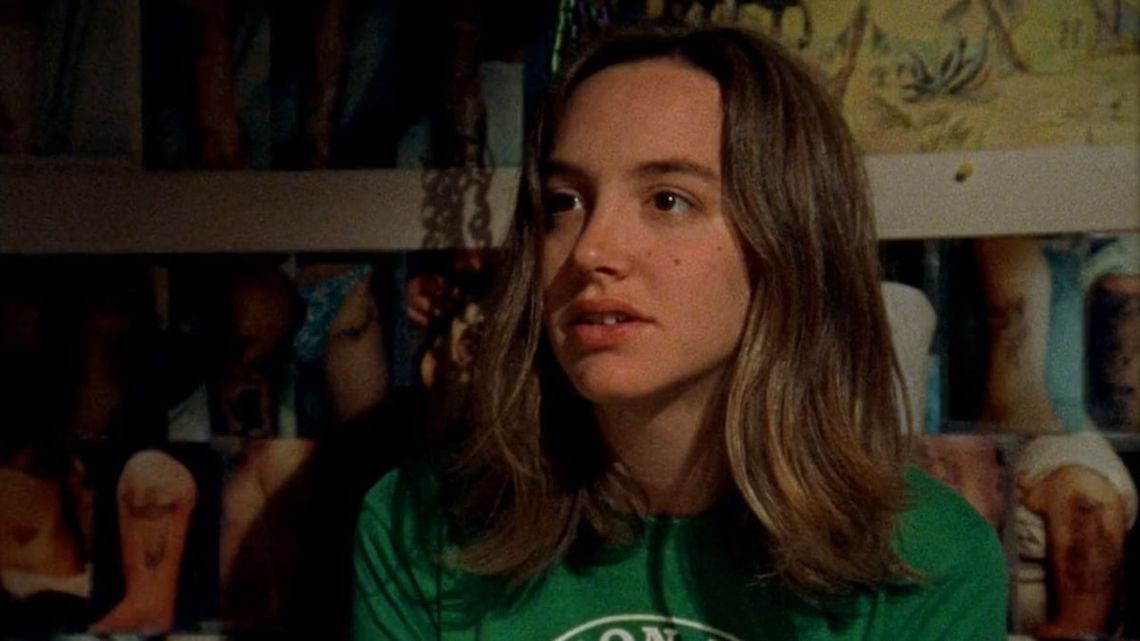Emerging out of the independent aesthetic of 1990s American indie cinema, mumblecore described a newfound focus on the real, the natural, and the young. Loosely grouping a style of film made from 2002 to the present day, the launch of mumblecore was both aesthetically and culturally meaningful, signifying a shift in what was important to the filmmaker. Developing since the early 2000s into a more recognised format, mumblecore’s early projects depict the first awkward steps into this new movement. As an indie subgenre, mumblecore’s point of difference was its minimalism. Through rejecting, either out of choice or necessity, film styles that had preceded it, mumblecore depicted and allowed space for the voices of a new American generation, even if these voices were heard only through the films’ subtleties.
Richard Linklater’s 1990 cult film Slacker is regarded as a key influence for the mumblecore films of the early 2000s. Listlessly following various people’s lives within one town, taking no heed of narrative or structure, Slacker hugely impacted American cinema. Gaining for itself a cult status, and being regarded as hugely artistically significant, it presented the possibilities and impact independent filmmaking could have on an industry as vast as American film. The film is made up of conversations; offering us a few minutes of a discussion before drawing us towards another. This sprawling dialogue, the almost frustrating lack of continuity, and the social, cultural, and emotional topics that the speakers dwell upon, drew filmmaking towards a simplified portrayal of the real.
These central themes of Slacker went on to impact the development of mumblecore. The first releases of the movement took a similar approach to Linklater in terms of filmmaking and film content. It was a progression and amplification of the Slacker aesthetic, whilst also bringing to the fore its own themes and points of discussion. Influenced by and reacting to the societies that created them, mumblecore was more than an indie subgenre, and instead represented, through its minimalism, a youth culture finding its voice.
Often described as the first mumblecore film, Andrew Bujalski’s 2002 release Funny Ha Ha encapsulates the movement’s main themes. Shot on 16mm film on a very low budget, the film follows the mundanities of Marnie, a twenty-something year old in Boston, as she navigates her feelings for friend Alex, tries to get a new job, and aims to better herself by going outside more. The scenes are natural, the acting is often awkward, with characters speaking their lines over each other, and yet the whole film is charming because of this. Funny Ha Ha led the term mumblecore to be coined when it was shown at SXSW festival in 2005. Eric Masunaga, a sound editor who also worked with Bujalski on several projects, described the films being shown as mumblecore, due to the poor sound quality and the inability to hear what actors were saying. However, the film was also praised because of this; its naturalism, its depiction of reality, and its self-consciously incoherent style appearing refreshing to the American film scene.
Whilst Funny Ha Ha focuses entirely on situation, reality, and its characters, Aaron Katz’s 2007 film Quiet City allowed the mumblecore aesthetic to reach different levels of affecting beauty. Covering one 24-hour period in New York City, Quiet City follows the story of Jamie, whose friend forgot to pick her up from the train station, and Charlie, who she asks for directions. The two form a friendship, as she crashes at his for the night, and the film offers singular vignettes of how they spend these 24 hours. Katz’s film focuses on the real feeling of time, the often-boring reality of time passing, to the point where it almost ignores time altogether. The film allows us to float alongside the characters, and once we stop searching frustratedly for action and narrative, then we can see the beauty of these moments. Depicting NYC as a place where two young adults can idly wait for the next day, rather than the ever-moving, ever-busy metropolis it is often illustrated as, captures the essence of mumblecore’s minimalist aesthetic.
Quiet City disallows heavy effects, editing, or artistic interference to impede upon the portrayal of the real. The soundtrack is made up of four tracks, two of which are written and performed by the characters during the film, with the other two being ambient, non-specific soundscapes. Scenes that could be dramatized through music, such as the pair’s race or their breaking into an apartment, are left silent, and therefore the real pace of the action is unaffected. Shot on location, rather than on a set, natural lighting is central to a lot of the scenes, such as the pair’s race in the park where the sun glare cuts across the screen. In this way, it appears in much the same style as naturalistic reality TV, which was gaining momentum in the early 2000s.
Poor sound quality, low-budget aesthetics, non-actors, jumpy handheld camera movements are all suggestive of a surge towards a DIY movement. Young filmmakers were creating independent films on their own rules. The cheaper and more accessible technology that was becoming available post-millennium offered creatives the tools to make these films, albeit if it was on their laptops, and social media was starting to offer alternative platforms to traditional cinemas. Facebook and Twitter were in their infancy, reality TV was becoming more popular than the movies, and this is all reflected into the discursive, calm, and social scenes of Funny Ha Ha or Quiet City. Mumblecore emphasized a homegrown culture that was slowly evolving at the start of the century, and that has now progressed much further than the rudimentary techniques of these initial projects.
Where these films excel past aesthetics, and offer a commentary on their times, is within their casual aimlessness. Within films such as Funny Ha Ha, Quiet City, Mutual Appreciation (Bujalski, 2005), and The Puffy Chair (Mark and Jay Duplass, 2005), lack of purpose becomes a radical idea. A concept that was central to Slacker, and was then furthered by mumblecore, was the recognisable shift in what the characters, and the people they represent, regard as important. Career ambition is replaced by a strong focus on people and personal relationships. Entertainment is replaced by real everyday life. The subtlety with which mumblecore foregrounded these shifts in focus is where its impact lies.
Whilst I find that these early blooming projects are where the crux of mumblecore can be found, Bujalksi, Katz, and the Duplass brothers continued to release films that utilised the subgenre’s main themes. One notable example of the popularity and impact of mumblecore was Greta Gerwig’s Frances Ha (2012), which mixed the movement’s non-plot, awkwardness, and character tropes with a black and white nouvelle vague aesthetic. Joe Swanberg, director of Hannah Take The Stairs (2007) went on to release many more films that followed the clumsy, naturalistic, dialogic format of mumblecore. Netflix show Easy (2016-2019) shows Swanberg moving the mumblecore tropes into mainstream entertainment. The series present vignettes of different individuals living in Chicago, and much like Funny Ha Ha or Quiet City, the characters and their relationships are central. Alexandre Lehmann’s 2016 film Blue Jay tenders to the same simple, sensitive, and humanistic note of early mumblecore. The film wonderfully narrates the reunion of two high-school sweethearts. Filmed over seven days and matching Frances Ha in its black and white aesthetic, it captures the spirit of mumblecore beautifully.
The filming style, naturalism, and lo-fi simplicity of mumblecore also lent itself to the horror genre. Films such as Frozen (2010, dir. by Adam Green), Creep 2 (2017, dir. by Patrick Kack-Brice), and The Ritual (2017, dir. by David Bruckner) can all be described as mumblegore; a subgenre that branches off mumblecore, entwining its traits with those of horror. Whilst the dawn of social media took influence on early mumblecore, the evolution of YouTube and vlogging has also heightened the continuation of the mumblegore genre. This is seen in Creep 2, where the found footage filming style suggests the solitude of Sara, the vlogger, intensifying her vulnerability.
Described in hindsight by those amongst it as a non-movement, something that wasn’t labelled and then when it was, ceased to make sense, mumblecore resists definition and official categorization as a film movement. Blurring the line between a subgenre and a movement within its own right, its difficulty to categorize further strengthens its impact. Within these films there appears shared values, a refocus on what was important within society and art, what was worthy of capturing, and the joy of the every day. Actors are replaced by non-actors, action by non-action, and how we interact with one another becomes the radical new focus.
‘Exploring the influences and impact of mumblecore’ is an article written by Letty Gardner. You can follow Letty on Twitter and Instagram.

